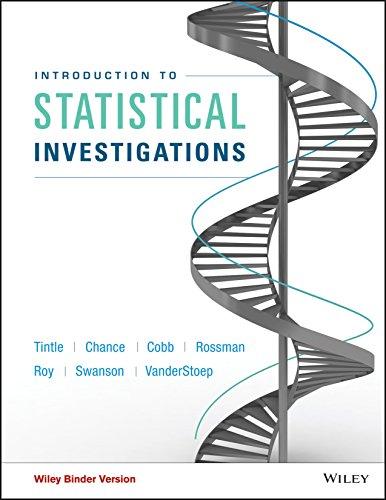In the same research article, Utts (1995) also cites research from Morris et al. (1995) where, out
Question:
In the same research article, Utts (1995) also cites research from Morris et al. (1995) where, out of 97 Ganzfeld sessions, the receiver could correctly identify the image sent 2 times. You would like to know whether these data provide evidence that in Ganzfeld studies receivers will do better than just guess when picking which image is being sent.
a. Find the sample proportion of “hits” in Morris et al.’s study. How does this compare to the sample proportion of “hits” in Bem and Honorton’s study: larger, smaller, or about the same?
b. Conjecture whether the p-value for Morris et al.’s study results will be larger, smaller, or about the same compared to that of Bem and Honorton’s. Explain your reasoning.
c. Use simulation to find and report a p-value. Based on this p-value, summarize your conclusion in the context of this study and explain your reasoning for having arrived at this conclusion.
d. Now carry out the same analysis, only instead of simulating the null, use the theory-based (normal approximation) approach for that null distribution. How does the p-value you found using the theory-based approach compare to the one you found using simulation? Does this surprise you? Why or why not?
e. Why do the p-values from the simulation versus theory based approaches in the Bern and Honorton study not differ as much from each other as do the p-values from the simulation versus theory-based approaches as here?
Step by Step Answer:

Introduction To Statistical Investigations
ISBN: 9781118172148
1st Edition
Authors: Beth L.Chance, George W.Cobb, Allan J.Rossman Nathan Tintle, Todd Swanson Soma Roy





